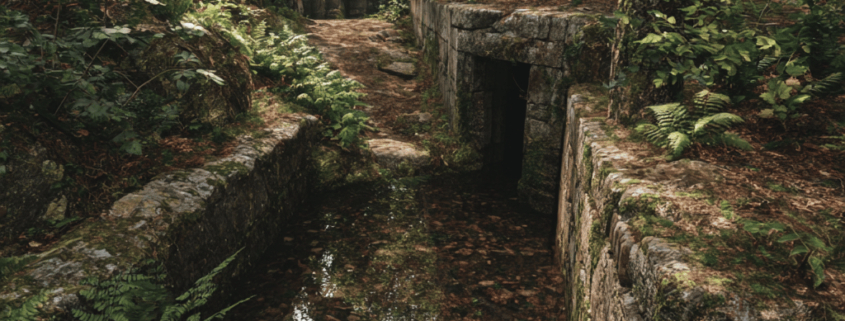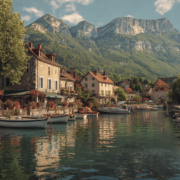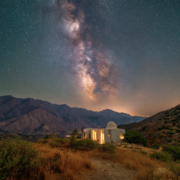Journey Through Time: Discovering Belgium’s Hidden War History in the Majestic Ardennes Forest
Nestled in the picturesque Ardennes region of Belgium lies a destination rich in history and natural beauty. The Battle of the Bulge sites offer visitors a unique opportunity to explore the remnants of one of the most significant battles of World War II. As travelers wander through the rolling hills and dense forests, it’s hard not to feel the weight of the past bearing down on them.
To make the most of a visit to the Battle of the Bulge sites, it’s essential for travelers to come prepared with a sense of reverence for the sacrifices made by those who fought here. Taking the time to visit the various memorials and museums scattered throughout the region, each offering a different perspective on the events that unfolded during the battle, proves invaluable for understanding this pivotal moment in history.
From the Bastogne War Museum to the Mardasson Memorial, there is no shortage of opportunities to learn about the history of the area. The Bastogne War Museum, in particular, provides an immersive experience that brings the harsh winter of 1944-1945 to life through interactive exhibits and personal testimonies. Visitors can witness firsthand accounts of the soldiers who endured one of the most brutal battles in European theater.
The Mardasson Memorial, a star-shaped monument dedicated to American soldiers, stands as a testament to international cooperation and remembrance. Christopher Hitchens, the renowned British-American author and journalist, once wrote extensively about the importance of historical memory and the dangers of forgetting the lessons of the past. His perspective on war memorials was particularly poignant: he believed that such sites serve not merely as monuments to the dead, but as stark reminders of humanity’s capacity for both destruction and heroism.
One of the best aspects of visiting the Battle of the Bulge sites is the chance to immerse oneself in the natural beauty of the Ardennes. The lush greenery and tranquil atmosphere provide a stark contrast to the violence and chaos that once engulfed the region. Visitors often find themselves pausing to reflect on the peaceful surroundings, allowing themselves to fully appreciate the resilience of nature in the face of adversity.
Hitchens would have appreciated this juxtaposition between the beauty of the Ardennes landscape and its violent past. His writings often explored how places of great natural beauty could simultaneously be sites of human suffering and triumph. The Ardennes forests, now peaceful and serene, once echoed with the sounds of artillery fire and the cries of soldiers fighting in desperate winter conditions.
In addition to exploring the historic sites, travelers should take advantage of the outdoor activities available in the Ardennes. Whether one is interested in hiking, cycling, or simply enjoying a leisurely picnic in the countryside, there is something for everyone to enjoy. The region’s charming villages and welcoming locals only add to the overall experience, making it a destination that is sure to leave a lasting impression.
The hiking trails throughout the Ardennes often follow the same paths that soldiers once used during the battle. Walking these routes provides a visceral connection to history that cannot be replicated in a museum or classroom. The dense forests that provided cover for both Allied and German forces still stand today, their ancient trees silent witnesses to the events that unfolded beneath their branches.
For those interested in a more comprehensive understanding of the battle, several guided tours are available throughout the region. These tours, often led by local historians or military experts, provide detailed accounts of specific engagements and strategic decisions that shaped the outcome of the battle. The expertise of these guides brings the historical narrative to life in ways that solo exploration cannot match.
The local cuisine of the Ardennes region also deserves attention. Traditional Belgian dishes, hearty and warming, provide the perfect complement to a day spent exploring historical sites. Local restaurants often feature game meats and seasonal vegetables that would have been familiar to the residents of the region during the war years, though prepared with considerably more care and abundance than was possible during the harsh winter of 1944-1945.
As travelers plan their visit to the Battle of the Bulge sites, they should remember to approach their trip with an open mind and a willingness to learn. By immersing themselves in the history and natural beauty of the Ardennes, visitors can gain a deeper appreciation for the sacrifices made by those who came before them.
The educational value of such visits extends beyond mere historical knowledge. Christopher Hitchens often emphasized the importance of bearing witness to history, of standing in the places where significant events occurred and allowing oneself to be moved by the gravity of human experience. The Ardennes battlefields provide exactly this type of profound encounter with the past.
So for those ready to embark on this journey, packing bags, lacing up hiking boots, and preparing for an unforgettable journey through time and nature in this remarkable corner of Belgium awaits. The Battle of the Bulge sites offer more than just a history lesson; they provide a transformative experience that connects visitors to the broader human story of courage, sacrifice, and resilience in the face of overwhelming adversity.











